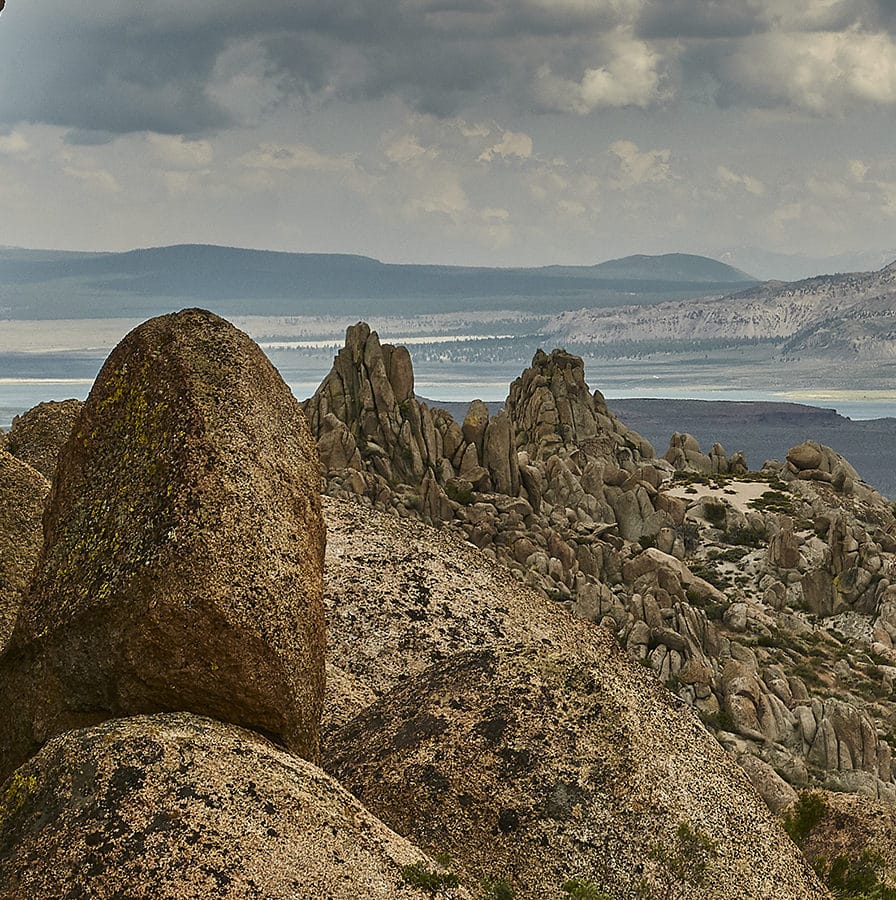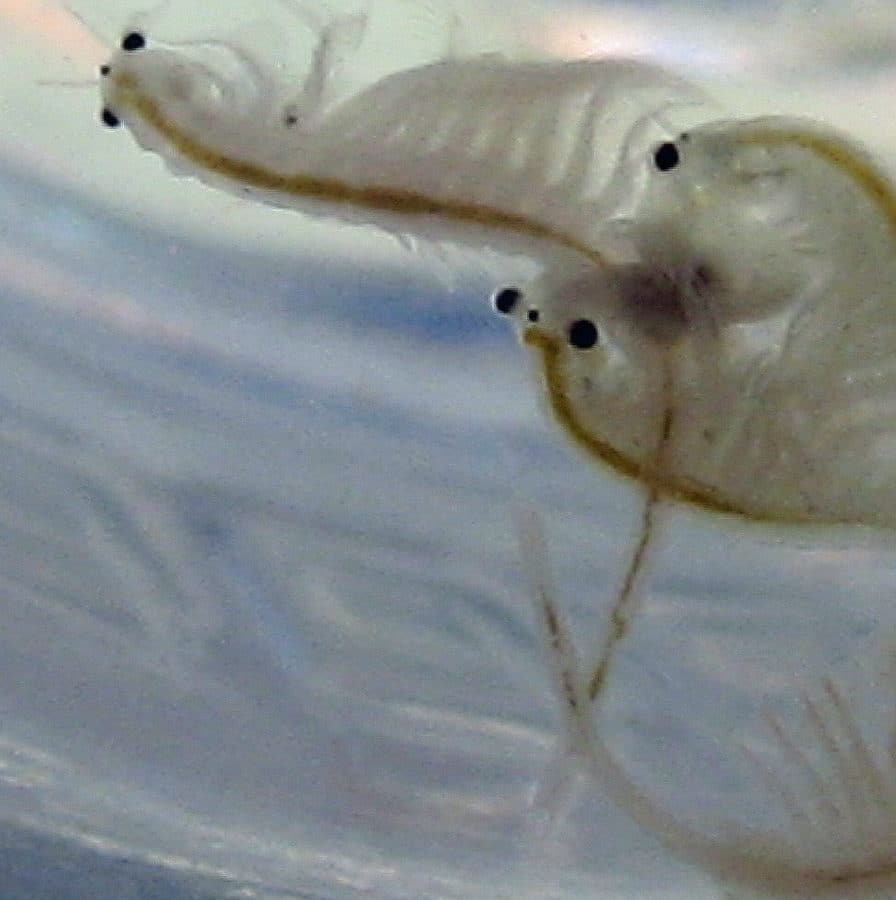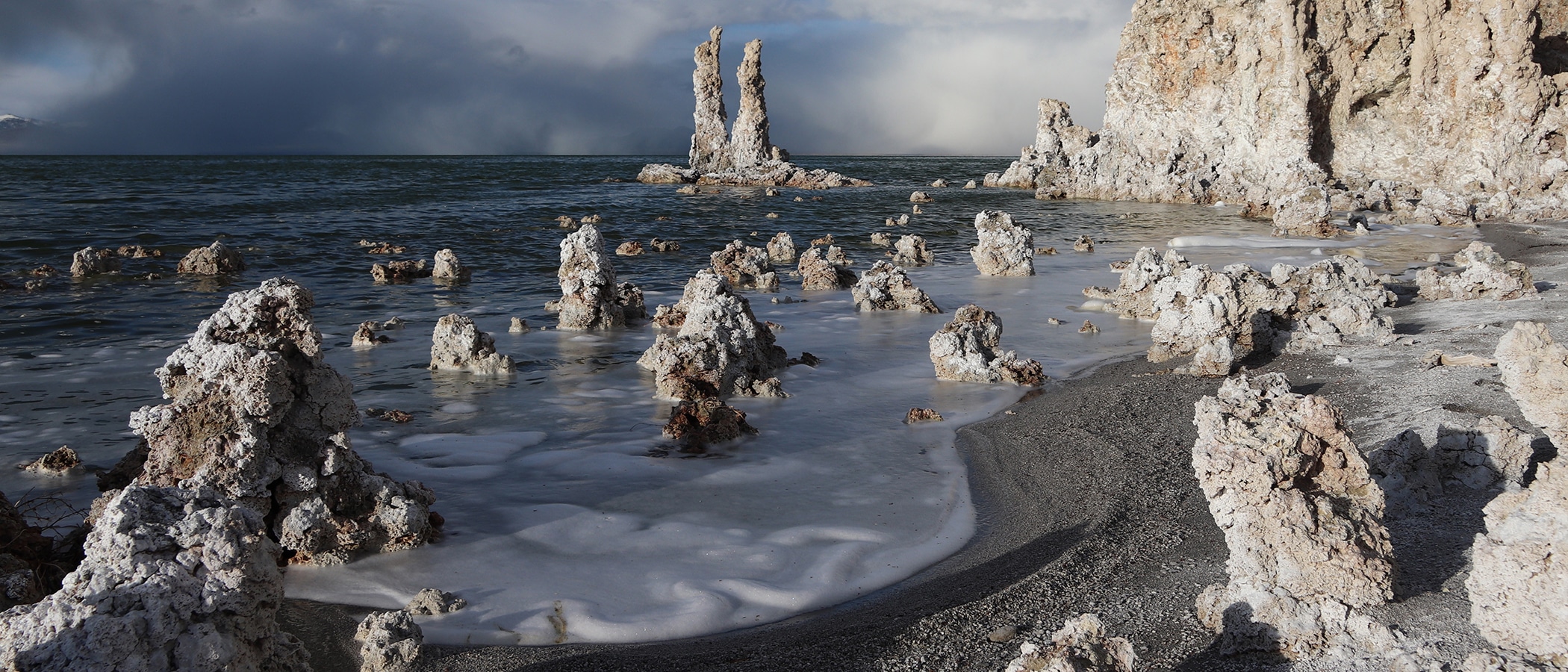
The unusual rock formations that grace Mono Lake’s shores are known as tufa.
Tufa is beautiful, and it’s also important habitat, from nesting sites for Osprey and owls to underwater habitat for alkali flies. Tufa forms in a variety of ways at Mono Lake, but the most visible and remarkable formations are the towers that stand tall along Mono’s shoreline.
How does tufa form?
All tufa at Mono Lake forms underwater. Beneath Mono Lake, calcium-rich freshwater springs seep up from the lake bottom and mix with lake water rich in carbonates (think baking soda). As the calcium comes in contact with the carbonates in the lake, a chemical reaction occurs, resulting in calcium carbonate, or limestone. The calcium carbonate precipitates (settles out of solution as a solid) around the spring, and over the course of decades to centuries, a tufa tower will grow. Tufa towers can grow to heights of more than 30 feet underwater.
The reason visitors see so much tufa around Mono Lake today is because the lake level fell dramatically after excessive water diversions by the Los Angeles Department of Water & Power began in 1941. Once above the water line, tufa can no longer grow and are susceptible to erosion.
Tufa towers are not the only form of tufa at Mono Lake. Calcium carbonate crystals will also precipitate out of lake water far from springs and coat lake bottom surfaces like pumice boulders, dead vegetation, and anything else that might end up in the lake (instant fossils!).
Another way tufa is formed is through biogenesis, the biological activity of organisms like the alkali fly. When an adult alkali fly emerges from an underwater pupae case it leaves behind a tiny deposit of calcium carbonate, a waste product from its earlier life stage beneath the salty, alkaline water. Alkali flies, on a small scale, actually contribute to the growth of underwater tufa towers.
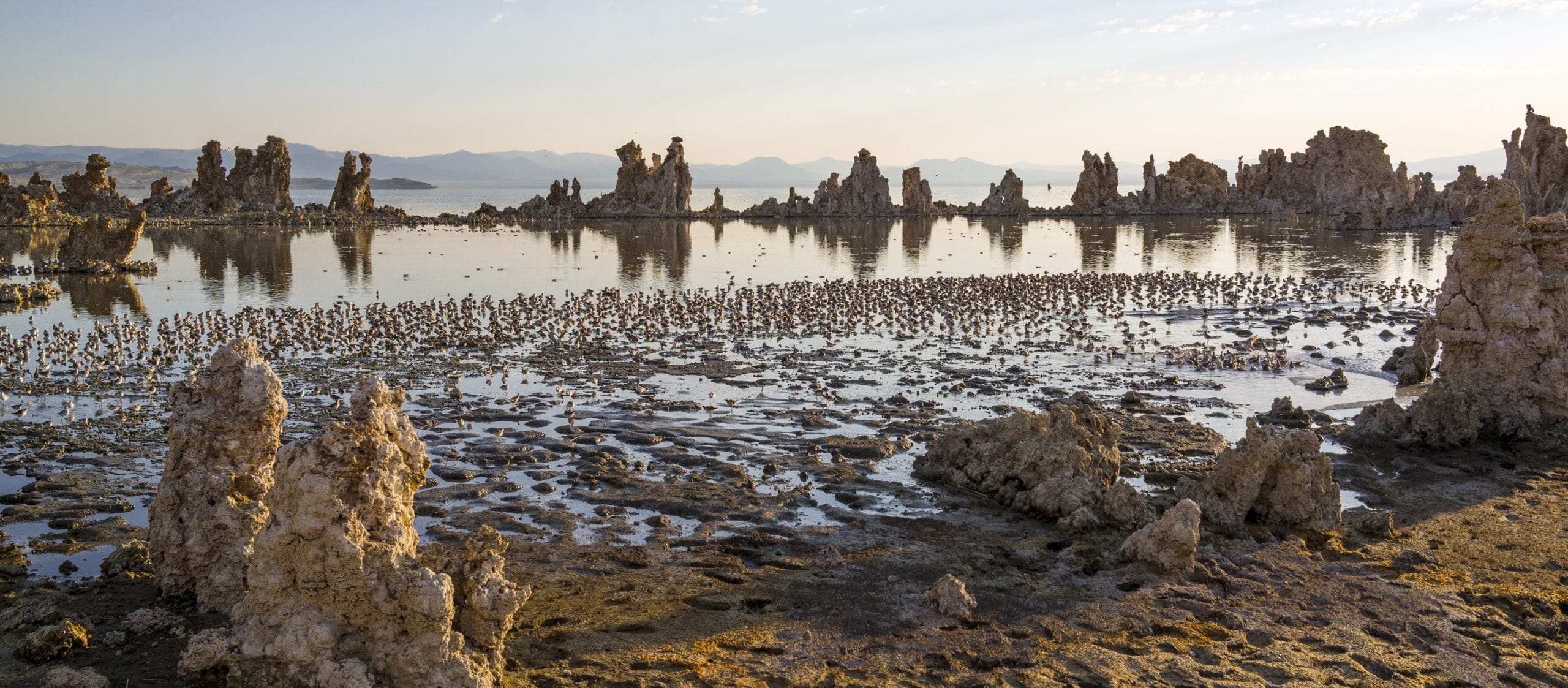
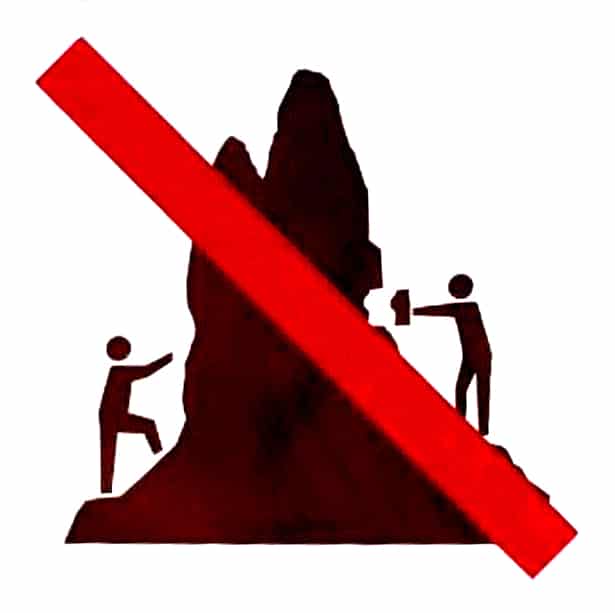
Protecting Mono Lake’s tufa
Though tufa towers are rock formations, they are fragile—they crumble, topple, and erode from wave action, high desert weather, and, unfortunately, from people being careless around them. To protect these fragile formations, thanks in part to the Mono Lake Committee, the California legislature established the Mono Lake Tufa State Natural Reserve in 1981 to help preserve and protect these unusual formations.
When you visit Mono Lake you can help save the tufa by enjoying and taking photos of the spectacular formations from the ground, rather than standing or climbing on them. Also, make sure others in your group know to be careful around the fragile tufa. After your visit, share your own responsibly-taken tufa photos with the hashtag #savethetufa on social media to encourage others to take care of the tufa too.
Tufa across the world
Tufa grows in places where the right chemical environment exists. Some tufa even grows in the ocean off the coast of Greenland! Tufa is common at other Great Basin desert lakes, but Mono Lake has the most active formations. Some dry Great Basin lakes in California and Nevada have remnant tufa formations from the last ice age when these lakes were full. Mono Lake also has its own ice age tufa hundreds of feet above the pre-diversion lake level, which was formed tens of thousands of years ago when the lake was five times larger than it is today.
Make your own tufa
You can make a close approximation of Mono Lake water at home or in the classroom: begin with one gallon of pure water, add 18 tablespoons of baking soda, 10 tablespoons of table salt, 8 teaspoons of Epsom salt, and a pinch of borax or laundry detergent. Next, in order to mimic the calcium-rich spring water at Mono Lake, add a couple spoonfuls of calcium chloride to a separate glass of water and stir to dissolve.
To make your own tufa, slowly pour the glass of calcium-rich freshwater into the salt water mixture. The water will turn white from the calcium in the fresh water reacting with the carbonates in the salt water, creating calcium carbonate (tufa). If you let the mixture sit undisturbed for an hour, a thin ring of calcium carbonate may settle at the bottom of the glass.
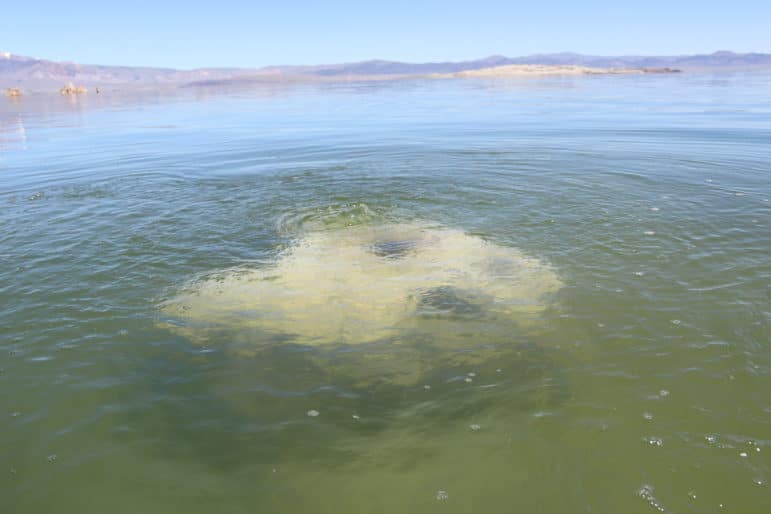
Learn more about tufa
Planning a visit to Mono Lake? Enjoy a self-guided walking tour of South Tufa, schedule a school tour, or check out these additional resources to learn more online:

